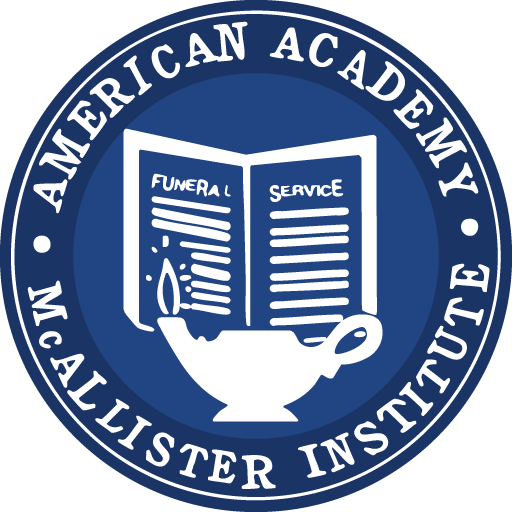
A mortuary science degree program is a mix of technical knowledge, science, and hands-on work, the latter of which is often the most exciting part for new students. For online and in-person students alike, the clinical training is when the degree work becomes real. While the textbook lessons, lectures, and labs provide an education, the clinicals provide practical experience that allows students to deal with real-world funeral service issues both scientifically and ethically.
While clinicals are cornerstones of funeral science degrees, the skills and graduation requirements during fieldwork are not always clear to mortuary science students. This article breaks down how clinical requirements work to help students achieve their mortuary science degree and gain the real-world experience they need to pursue their careers with confidence.
What are the Clinical Requirements in Mortuary Science?
In mortuary science degree paths, clinical requirements are supervised, hands-on experiences with the goal of developing real-world technical competency, confidence, and professional readiness before licensure. Examples of clinicals include hands-on embalming, restorative art, and funeral directing practicums.
When Do Clinicals Take Place?
Clinicals typically occur in the latter half of the program, often in the final semesters of the degree, once students have successfully completed the required coursework. Even for online students enrolled in virtual classes, traveling to campus or an internship may be required, depending on the program, to fulfill their in-person clinical hours.
What Does Clinical Embalming Involve?
Embalming clinicals help students transition from their technical learning to professionally supervised real-world experience. The objective of clinical embalming is to gain practical anatomical knowledge and experience in scenarios similar to those that funeral service professionals are presented with every day.
The tasks involved can include:
- Body preparation
- Arterial Injection
- Cavity treatment
- Disinfection
- Positioning
- Cosmetics
Most programs require students to complete a minimum number of embalming cases before licensure, though the number varies by state. These clinicals are performed under the guidance of licensed professionals.
Restorative Art & Funeral Directing Practicum

The restorative art and funeral directing practicums help students address illness, trauma, or damage to the deceased through restorative art and reconstructive techniques. The restorative art labs, for example, involve learning reconstruction techniques for various situations, including physical injuries and illnesses. Students will learn to use waxes, cosmetics, sculpting tools, and classroom manikins to create respectful displays for the funeral of the deceased. This experience is particularly important for mortuary science graduates who pursue embalming careers.
The funeral directing practicum includes management tasks to prepare graduates to run their own funeral homes, including shadowing licensed funeral directors or even performing mock arrangements to learn how to assist families, prepare paperwork, and coordinate the logistics of funeral services.
What Students Can Expect
The purpose of the clinical requirements is to help students prepare for the various logistical aspects of real-world funeral service practice. This includes setting realistic schedules that involve on-call work in the early mornings, nights, and weekends, exposure to emotionally intense situations, and proper professional behavior.
Emotional resilience and professionalism are core to successful clinicals. Students will be held to the strict dress codes of funeral directors, judged on their professional behavior, and taught infection control protocols. Evaluations include practical assessments that track students’ clinical progress toward completion.
How to Prepare for Clinical Requirements
To prepare for clinical requirements, mortuary science degree students must first complete their foundational coursework, including embalming theory, anatomy, introduction to funeral directing, and more. They must thoroughly review safety protocols like infection control guidelines and practice the professionalism that will be required in their eventual funeral service careers. This requires them to demonstrate the correct punctuality, confidentiality, compassion, and respect that funeral directors must show every day.
In addition to logistical preparation, students should also use their clinicals as an opportunity to emotionally prepare for their funeral service careers. They need to be ready to regularly encounter the deceased and their grieving loved ones, prepared to approach difficult situations with tact and empathy.
Clinicals & Licensure Requirements

Clinicals are often required by state boards, including the ABFSE (American Board of Funeral Service Education). In most states, hopeful funeral service professionals cannot sit for licensure exams until completing clinicals. The hands-on cases they participated in and the assessments they received will be submitted to the licensing board to confirm eligibility. Once approved, they can move on to licensure and exams before entering their new career field.
Begin Your Funeral Service Career Today
At AAMI, we provide students with the coursework, guidance, and resources they need to excel in our online and on-campus mortuary science degree programs. However, all funeral service students must eventually participate in and pass real-world clinicals overseen by a professional. In most states, they are required for licensure; in all states, clinicals provide valuable experience that mortuary science graduates need to perform their duties effectively, professionally, and compassionately.
Contact AAMI today to learn how we provide and oversee clinicals to help students complete their coursework with as much hands-on learning and training as they need to pass their licensures and become respected funeral service professionals.
